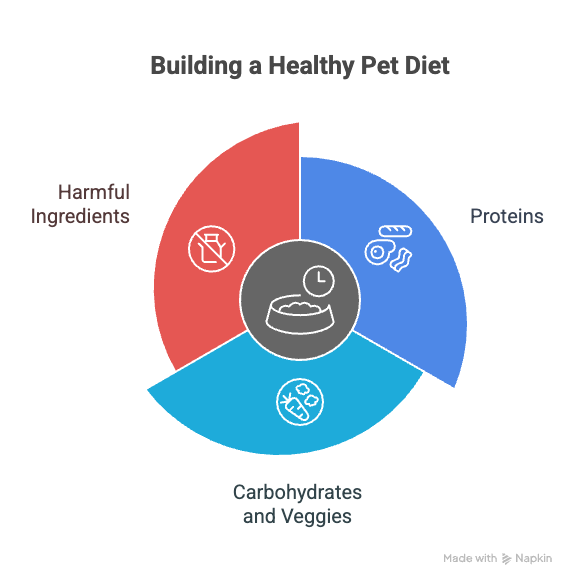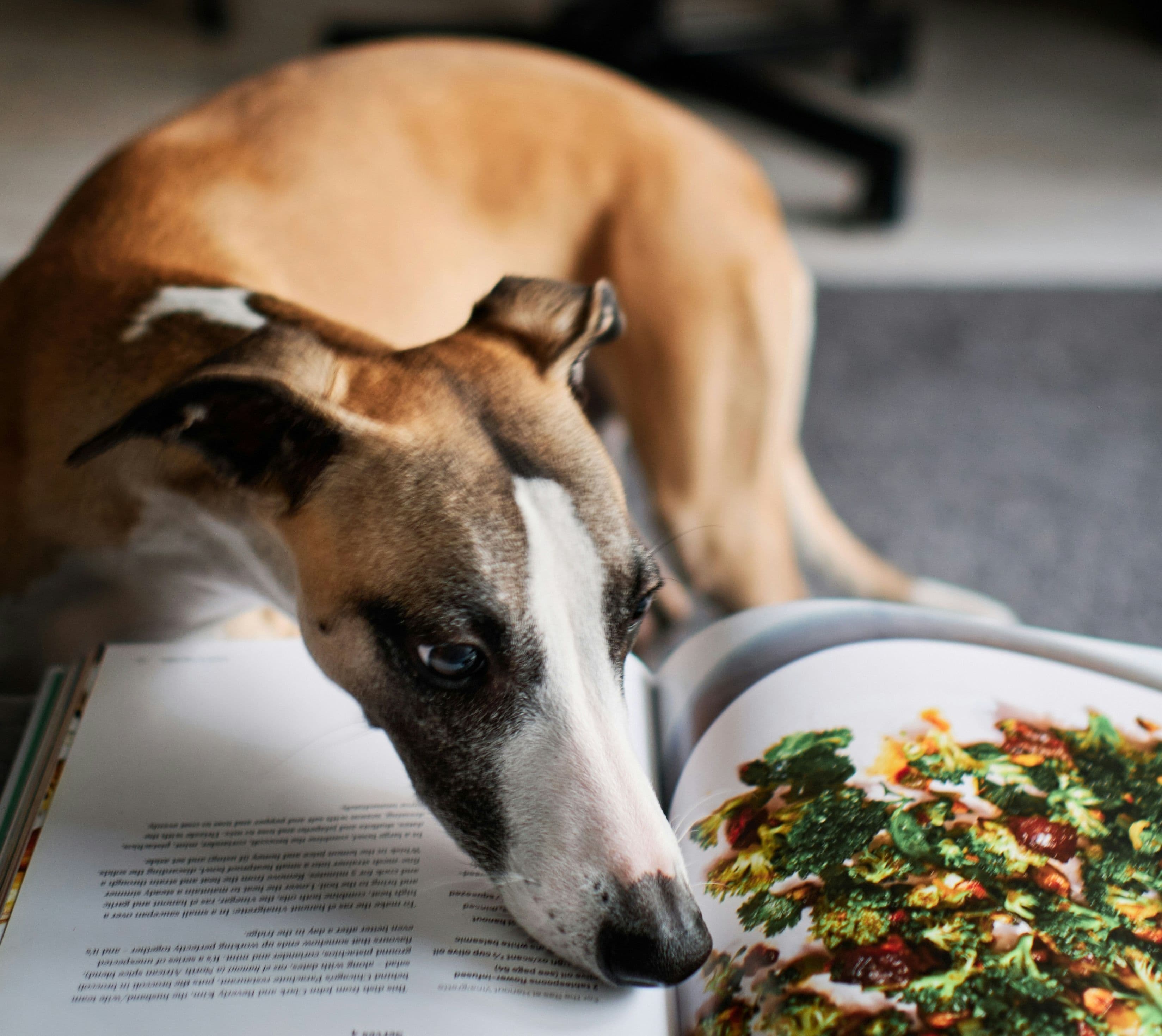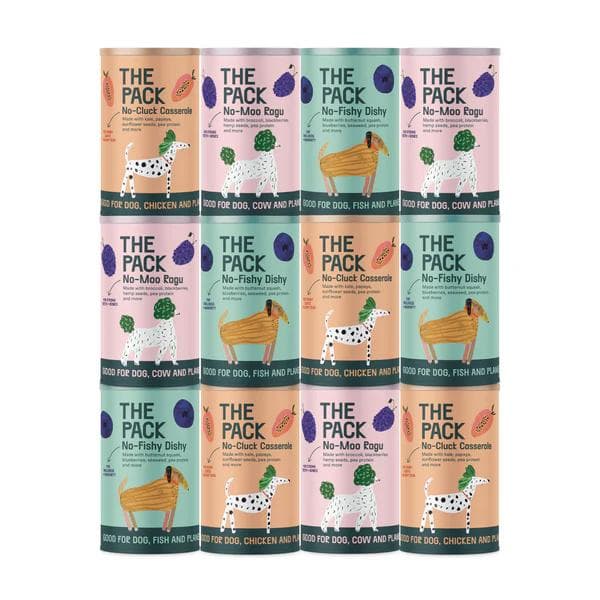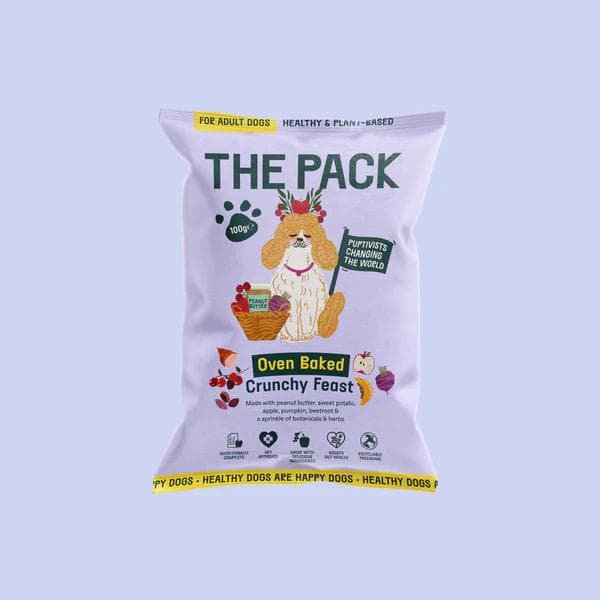Key Takeaways
Making your own dog food can be a rewarding method to improve their health and well-being, and it's a good alternative to store-bought diets.
- To make a complete homemade dog food, you need to carefully mix protein, healthy fats, carbs, vitamins, and minerals. If you want to be sure your recipes match these guidelines, talk to a vet or dog nutritionist.
- Use vet-approved recipes to make meals that are right for your dog's breed, size, age, and level of activity to keep them healthy and safe.
- To make meals without preservatives that are better for your digestion, immune system, and coat quality, choose fresh, high-quality foods like lean meats, whole grains, and fruits or vegetables that are high in nutrients.
- Compared to manufactured kibble, homemade meals may help with allergies, give you more energy, help your digestion, and make you feel better overall.
- It's important to keep your dog's food secure, clean, and in the right amounts to keep it fresh and safe.
- Nutritional supplements like calcium or omega-3 can help make up for any gaps in your dog's diet, making sure they get all the nutrients they need for good health.
- Don't feed your dog onions, garlic, chocolate, xylitol, or too much salt, all of which are very bad for their health.
- Start adding homemade meals to their diet slowly, combining them with their regular food to avoid stomach problems and make the change go smoothly.
- Taking your dog to the vet or talking to a dog nutritionist on a regular basis is important to make sure that their dietary needs are being satisfied as they get older or change their lifestyle.
When created with care, homemade dog food lets pet owners give their beloved pets healthy, personalised meals. In this complete guide, we'll talk about how to make balanced meals, answer frequent questions, and make feeding your dog as enjoyable for you as it is for them.
Introduction
What if every meal you gave your dog made him or her healthier, more energetic, and happier? Making your own dog food lets you design meals that are just right for your dog and make sure that every bite is full of fresh, healthy ingredients.
Homemade dog food is superior than store-bought food in many ways, such as having less preservatives, being healthier for digestion, and being better overall. But to make safe and balanced meals, you need more than just enthusiasm; you need to know a lot about dog nutrition.
This guide will help you. You'll learn how to make mealtime an act of love and care by choosing the right ingredients, using safe cooking methods, and making meals that are just right for your pet's size, age, and lifestyle.
Learning About Dog Food
Knowing what your dog needs to eat is the most important part of making meals at home. Dogs can get nutrients from both plants and animals because they are omnivores. However, their dietary needs are very different from those of humans. To make balanced homemade dog food, you need to know about both the macronutrients (protein, lipids, and carbohydrates) and the micronutrients that are important for good health.
Macronutrients: Necessary Parts
Protein: This is what dogs need to stay healthy. You can't say enough about how important protein is for keeping muscles strong, boosting the immune system, and helping cells repair themselves. Dogs need high-quality proteins including fish, chicken, turkey, and lean meat. Puppies need diets that are 22% protein, while adult dogs need at least 18%. Most homemade diets aim for 25–30% protein to keep pets active and healthy.
F shoulder fats are another important part of dogs' meals because they provide them energy, keep their skin healthy, and make their coats shine. Fish oil, flaxseed oil, and chicken fat are all good sources of healthy fats that are high in omega-3 and omega-6 fatty acids. These fats help the brain grow and lower inflammation. Most recipes should have 10–15% fat, although some breeds that are very active may need more.
Carbohydrates: Carbohydrates are not necessary, but they are a good source of energy and help keep the digestive system healthy. Brown rice, oats, and sweet potatoes provide you energy that lasts a long time and also add fibre and B vitamins to your diet. Adding complex carbs to your dog's food will help them keep their energy up all day.
Micronutrients: Getting It Right
Micronutrients are generally the hardest part of DIY diets. For example, dogs need calcium and phosphorus in certain amounts (around 1.2:1 to 1.4:1) to keep their bones and teeth healthy. Vitamin A helps the immune system and the eyes, B vitamins help the body use energy, and vitamin D helps the body absorb calcium. Even missing small amounts of minerals like zinc and selenium can hurt a dog's immune and enzymatic systems.
This complicated balance shows how important it is to do a lot of study or talk to an expert to make sure your recipes fulfil nutritional guidelines. You're not just changing your diet; you're making one that keeps you alive.
Making Diets Fit for Each Breed, Age, and Activity
Dogs are not all the same, and their diets shouldn't be either. To keep your dog as healthy as possible, you need to make sure their meals are right for them. This is true whether you have a high-energy sporting breed, a developing puppy, or an older dog with arthritis.
Puppies, adults, and seniors
Puppies grow quickly, so they need more protein and fat in their diets (28–30% and 15–18%, respectively). Their bodies need to be fed often to keep their blood sugar levels stable and to help their brains and muscles grow.
Adults, especially those who are active, do well on a balanced diet that has the right amounts of protein (18–25%) and fat (10–15%). On the other hand, older dogs require less calories to stay healthy, but they do well with easy-to-digest proteins and extra components that are good for their joints, including glucosamine-rich foods.
Diets Based on Activity Level
Dogs with a lot of energy, like Border Collies or Siberian Huskies, need diets that are higher in calories and fat (15–20%) to keep their energy up. On the other hand, pets that don't move around much or are overweight do better with smaller servings and fewer calories and fat. Customising your dog's food plans will help them stay at a healthy weight and have lots of energy, no matter what their lifestyle is like.
Choosing the Right Ingredients: The Key to Good Health
A healthy homemade diet starts with high-quality foods. Not only do they make sure your pet's meals are tasty and easy to digest, but they also make sure they are healthy.
Proteins: Lean meats like chicken breast, turkey, salmon, and sardines are good sources of amino acids and omega-fatty acids. Organ meats like liver and kidney are also good sources of nutrients. For the best results, add 5 to 10 percent organ meat to the total protein composition.
Carbohydrates and veggies: Brown rice, quinoa, and oats provide you energy that your body can use, and veggies like carrots, spinach, zucchini, and sweet potatoes give you vitamins, antioxidants, and fibre.
Stay Away from Harmful Ingredients: Dogs should never eat garlic, onions, grapes, avocado, xylitol, or chocolate because they are all harmful to them.

Making and keeping food
The way you make and store homemade dog food is just as crucial as the materials themselves. When you steam, boil, or roast food, the nutrients stay in the meal and it becomes easier to digest. Also, batch cooking and freezing portions make sure that everything stays fresh and secure while still being efficient. Use sealed containers to keep bacteria away, and always follow good hygiene rules.
Conclusion
Making your own dog food is a great way to feed your pet and get to know them better at the same time. You may improve your dog's health, lengthen their life, and improve their quality of life by giving them balanced meals that are made just for them.
But making your own food requires hard work, accuracy, and constant learning. To make sure your dog stays healthy in the long run, you need to talk to professionals, read up on nutritional requirements, and check on your dog's health on a regular basis. The time and effort you put into your dog's meals shows how much you care, and it will make both of you happy and healthy for years to come. It's not just about the food when you prepare it at home; it's about giving your dog the greatest life possible.



